Home » Posts tagged 'cinema'
Tag Archives: cinema
The Thomas Crown Affair (1968) vs. The Thomas Crown Affair (1999)

Hollywood has been remaking movies since the beginning. And with a few notable exceptions, most of these films have failed to capture the magic of the original. Even today directors seem convinced that they can produce Hollywood magic by creating an endless array of sequels, remakes, and reboots. Nevertheless, there still exists that rare category of film screaming to be remade.
One such movie is The Thomas Crown Affair. Neither the 1968 original nor the 1999 remake manages to surpass the other. Whilst the original excels at style and sexual tension, it is overshadowed by the remake’s plot and music score. Both films are essentially “style” movies. They rely heavily upon atmosphere to draw in an audience. The cool jazz of the 1999 remake is a massive improvement over the original. There can be no denying that Nina Simone’s “Sinnerman” is better suited to the film than the original’s “Windmills of Your Mind.”
But what the remake wins in music, it loses in style and sex appeal. From Faye Dunaway’s wardrobe to Steve McQueen’s three-piece suits, the style of The Thomas Crown Affair (1968) has become an iconic part of 20th century style. The tailored suits and designer skirts lend themselves to the film’s upmarket atmosphere and help enhance the sexual tension, which is far more palpable here despite the remake’s decision to show more explicit sex.
The 1999 film makes enormous improvements on the original’s plot. In the original film, the audience is never granted a satisfactory explanation as to why a wealthy, sophisticated gentleman would waste his time organising a bank robbery (the explanation that he does it for kicks barely passes muster). In the remake, the director, John McTiernan and the screenwriters, Leslie Dixon and Kurt Wimmer, decide to make Crown an art thief. It is a crime that makes Crown seem intelligent, cultured, and sympathetic.
At the centre of both versions of The Thomas Crown Affair is the relationship between Thomas Crown and Vicki Anderson (Faye Dunaway)/ Catherine Banning (Rene Russo). In the original film, Crown and Vicki compete as equals causing a sexual tension to pulsate through the entire film. Similarly, in the remake Crown and Banning act as mirror images of one another. Unlike the original, however, the sexual tension quickly fizzles out when the pair form a romantic attachment to one another. At this moment, the erotically-charged battle of wits is replaced with a soap opera-style romance that is, frankly, embarrassing to watch.
In both versions of the film, Thomas Crown is presented as an elegant, sophisticated alpha-male who amassed his wealth thanks to a shrewd business mind and a willingness to take extreme risks. When Crown isn’t making multi-million-dollar deals at the corporate board table, he’s pursing hobbies like polo, gliding, yachting, and golf.
Both Steve McQueen and Pierce Brosnan portray Thomas Crown as a bored millionaire playboy: the type of man with an almost insatiable need for adrenaline. There are, however, marked differences in the way each actor portrays the character. Steve McQueen plays Crown with the kind of roguish charm that made him the “King of Cool” in the sixties and seventies. By contrast, Pierce Brosnan plays Crown as a charmer, the kind of man who feels comfortable in country clubs and golf courses because he’s lived around them his entire life.
As mentioned before, competing against Thomas Crown are the insurance investigators Vicki Anderson and Catherine Banning. Both are largely similar characters. Both have resided in Europe, both are sophisticates, and both come to suspect Thomas Crown merely because they find him attractive. In terms of characterisation, Catherine Banning is certainly the more nuanced of the two.
There is one area, however, where Vicki Anderson excels over Catherine Banning. Sex appeal. At the age of forty-five, Rene Russo (who, it must be said, is a perfectly fine actress) looks too old to be playing the part of a sultry sex kitten who is supposed to be the source of all men’s fantasies. (Faye Dunaway, by contrast, was only twenty-seven and looks every part the sex kitten). Better choices would have been Sharon Stone, Catherine Zeta-Jones, Kim Basinger, Kate Winslet, Emanuelle Béart, and Monica Bellucci.
In 2016, Variety reported that Michael B. Jordan was set to star in a second remake of The Thomas Crown Affair. Those wishing to remake the film should heed the following advice. They should combine McQueen and Brosnan’s portrayals of Crown to create a character a witty, urbane, charming, and roguish anti-hero. They should retain the style and sex appeal of the original film, but follow the remake’s lead when it comes to music and plot. And, finally, they should make absolutely certain that they cast the right actress as the female lead. Only then will we get the film we truly deserve.
The Problem With Modern Action Movies
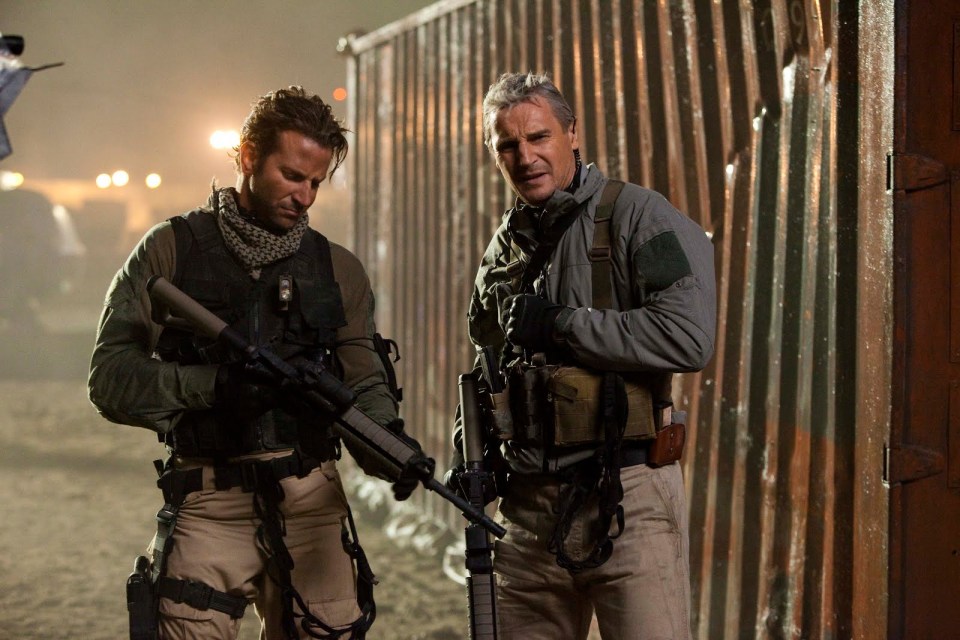
Action movies just aren’t what they used to be. On Saturday night, I watched the film version of the hit 1980s TV show, the A-Team. A part of me hoped for an enjoyable experience, but, just as I had expected, I found the film to be cliched, formulaic, and predictable.
It became evident early on that the filmmakers had taken little to no effort in the making of this story. The plot was boring and predictable, and the characters were two dimensional. Indeed, it seemed that most of the film had been devoted to bad digital effects and over-the-top action sequences.
This is the kind of thing that passes for action movies nowadays. It is a far cry from the greats of yesteryear which, at least in the best of cases, were willing to combine action with intelligence. It is certainly true that these films featured death-defying stunts, mind-blowing special effects, and well-choreographed action sequences. However, it is also true that the best among them also featured complex, three-dimensional characters and clever, intricate plots. Yes, these films often pushed the boundaries of disbelief, but we were more than happy to suspend our disbelief for them anyway.
Any successful movie, particularly an action movie, requires two things: a good plot and good characters. One of the biggest problems with the modern action movie is that they are often boring. The audience finds it difficult to engage with the story because there is no character or plot for them to care about.
Great action movies have great, exciting stories. The problem is that modern action movies have a tendency to recycle the same tired stories over and over again. Audiences have been subjected to an endless array of reboots, remakes, sequels, and prequels. Audiences crave originality. What we need is original stories, not a rehash of a television show that ended over thirty-years-ago.
It’s not as though an action movie’s plot has to be entirely original, either. Most of us are willing to accept a familiar, or even cliched, story provided it’s presented in a new and interesting way. Take, as a case in point, the film Speed. Its plot is essentially a rehash of the Die Hard model, but by placing the action on a bus, the filmmakers managed to gain the appreciation of their audience by presenting them with something novel.
In addition to the importance of plot, it is also equally important to discuss the importance of character. Modern day action heroes often lack interesting character arcs. The audience has not been allowed to care about the characters as people and therefore have little reason to root for them. People like to see characters go through a personal journey. They like to see them grow and develop as a character. Good action heroes have some kind of flaw, whether it be a bad attitude, debris from their past, poor self-esteem, or any one of a thousand different things, that he or she must overcome to complete their mission.
The heroes of great action movies were relatable. The filmmakers knew they had to combine the right amount of vulnerability with the right amount of grit. We had to believe that these people bled, made mistakes, and felt pain.
In other words, these heroes had vulnerabilities. They were not invincible. The audience could believe that Axel Foley (Beverly Hills Cop) spent most of his time busting low-level crooks in downtown Detroit and that he genuinely felt anger and grief over the murder of his friend. In Die Hard, the filmmakers were prepared to take the time to let us get to know John McLane. We learnt that he was an Irish-American police officer, that he was a father, that he was estranged from his wife, and that he was frightened of flying. And when he had to fight terrorists, the Los Angeles Police Department, and the FBI, we genuinely rooted for him because we had been allowed to get to know him.
Equally important, if not more important in many cases, is the film’s villain. Good stories have good protagonists, great stories have great antagonists. There has to be something in a villain that makes him at least a little bit likeable, or even sympathetic. A part of us has to be able to understand his motivations and even root for him. We could understand why Karl wanted to kill John McLane because we had seen McLane kill his brother. And we could understand why Speed’s chief antagonist, Howard Payne, wanted to hold the city of Los Angeles to ransom after we learnt that he had been injured in an explosion working for the LAPD. Heck, even films in which the villain wants money or power, or both, are relatable because we want these things, too.
If the producers of action movies were willing to invest as much time and effort in story and character development as they were on special effects, it is possible that they might someday produce another great action movie. But, with the way things are going, I wouldn’t hold my breath.
NOTE: I apologise for the long delay between articles. I have been in the process of preparing a rather lengthy article on constitutional monarchy.
The Qualities That Build Society

Everyone versed in culture and politics understands the truth in Percy Bysshe Shelley’s (1792 – 1822) argument that creators of culture are the “unacknowledged legislators of the world.” Our view of the world is derived from our religious beliefs, the stories we read as children, the movies we watched, the cultural customs we become accustomed to, and so forth. It is not that culture constructs the physical edifices of civilisation per say, but that culture forms the values and philosophies upon which civilisation is founded.
In the west, the prevailing cultural narrative champions wholesome virtues: kindness, compassion, love, fair-play, and so forth, as being the only way to achieve prosperity and success. The individual must avoid combat with others, and be polite, civil, pleasant, and diplomatic to all. To be seen using aggression or wanting power leads to social isolation. This has certainly been the message in culture. In Shakespeare’s Richard III, the title character is a corrupt, twisted, and Machiavellian prince who schemes his way into power. By contrast, the future Henry VII is seen to be fair and humane. By the end of the play, Richard dies hated even by members of his own family, whereas Henry is celebrated as a noble hero.
This worldview bears little resemblance to reality:
“The manner in which we live, and that in which we ought to live, are things so wide asunder, that he who quits the one to betake himself with the other is more likely to destroy than to save himself; since anyone who would act up to a perfect standard of goodness in everything, must be ruined among so many who are not good. It is essential for a prince who wishes to maintain his position, to have learned how to be other than good, and to use or not to use his goodness as necessity requires.” (Niccolo Machiavelli, The Prince, 1532, Chapter 15, page 114)
Bubbling just below the surface are the real, amoral virtues which foster prosperity and success. In Beyond Good and Evil (1886), Friedrich Nietzsche (1844 – 1900) puts forth the following proposition:
“Suppose nothing is given as ‘real’ except our world of desires and passions, and we could not get down, or up, to any other ‘reality’ besides the reality of our drives.” (Beyond Good and Evil, page 59).
Maybe we aren’t as driven by morality and Godliness as we like to think we are. Maybe we are driven by lust for power, material wealth, and sex. (This, of course, brings forth the possibility that the purpose of wholesomeness is to temper our real desires).
Even though we loathe having to admit it, all of us want power. Power gives us greater control and makes us feel more secure. But since it is socially unacceptable to be seen wanting power we are forced to rely on subtlety. We are forced to become honest on the one hand, and duplicitous on the other, congenial yet cunning, democratic yet devious.
In chapter twenty-one of the Prince, Machiavelli (1469 – 1527) wrote: “Nothing makes a prince so well thought of as to undertake great enterprises and give striking proofs of his capacity.” Our civilisation was built through ambitious and power-hungry individuals. Not by the wholesome virtues presented to us.
GREAT EXPECTATIONS (1946)

This week for our weekly cultural article we will be examining the David Lean’s (1908 – 1991) 1946 film Great Expectations, considered to be one of the greatest British films ever made. When it was released in 1946, it was met with glowing reviews. Today, seventy years later, it has been described by Criterion as “one of the greatest translations of literature into film.”
David Lean’s Great Expectations captures the essence of Charles Dicken’s (1812 – 1870) literary genius by juxtaposing his memorable characters with the artful film direction of David Lean. Leans use of black and white to add to the foreboding and melancholy atmosphere of the film. Then there are the numerous dark, creepy, rundown, and ultimately human locations that burn themselves into the memory: the creepy graveyard where a young Pip first meets escaped convict Abel Magwitch, the Kentish marshes, Miss Havisham’s dilapidated and macabre home whose clocks are stopped at the exact time Miss Havisham learnt of her fiance’s betrayal, 19th century London, Mr. Jagger’s offices whose walls are decorated with the death masks of defendants lost to the gallows, the prison where Magwitch dies, and so forth.
Then there are the wealth of memorable characters the film presents to us. The most notable of these is Pip through whom we see all of the tragedy and injustice of early 19th century England. Pip acts as more of an observer to the world around him than an actual protagonist. We first meet Pip (Anthony Wager, 1932 – 1990) as a young orphan being raised by his overbearing older sister (Freda Jackson, 1907 – 1990) and her kindly blacksmith husband (Bernard Miles, 1907 – 1991). It is during this time that Pip first encounters Abel Magwitch (Finlay Currie, 1878 – 1960), a kind yet ultimately decent escaped convict, in the cemetery, and when his heart is broken by the coquettish Estella (Jean Simmons, 1929 – 2010) and the dishevelled and deranged Miss Havisham (Martita Hunt, 1900 – 1969).
As the film progresses, we see Pip grow into a young man, played by John Mills (1908 – 2005), who, it could be argued, was perhaps a little too old to play Pip in his early twenties. This Pip has been bequeathed a large allowance by an unknown benefactor and travels to London with the view of becoming a gentleman. There he forms a friendship with the Herbert Pocket (Alec Guinness, 1914 – 2000) who helps him refine his manners. The adult Pip finds himself corrupted by the ponce and ceremony of the English upper-class and is ashamed to admit that he would have paid money to keep Joe Gargery, dressed in his cheap suit and awkward manner, away. Pip is forced to reexamine his views after discovering that his benefactor is none other than the escaped convict Magwitch, who was so struck by Pip’s childhood compassion that he was inspired to make something of himself and become his benefactor. Magwitch’s kindness and gratitude cause Pip to regain his lost humanity.
Great expectations represents a type of film that no longer exists: one that deals entirely with the human condition. These films are no longer made because they often do not involve exciting elements, but rather present characters that are flawed and suffering and places these characters in stories that are essentially tragic in nature. These films are no longer made because they do not fit into the blockbuster formula. Rather than the larger-than-life heroes of the blockbuster, films on the human condition feature characters that are ultimately flawed and suffering. These characters are placed in stories that are ultimately tragic in their nature. A far cry from the often over-the-top plots of the modern blockbuster. There is something deeply satisfying about films like Great Expectations which shows normal people to be capable of leading a dignified existence regardless of the tragedy and suffering they are forced to face.
THE SHADOW

Embedded throughout world religion and mythology is the psychological motif of the shadow. In the story of the fall of man, the shadow is symbolised in the snake that tempts Eve to eat the fruit of the tree of the knowledge of good and evil. In modern times, the motif of the shadow can be seen in various superhero and fantasy films. Batman can be seen as the shadow of Bruce Wayne, Harry Potter’s ability to speak to snakes is a sign of his magical connection to the evil Lord Voldemort, and so forth.
Perhaps the most notable example of the shadow, however, comes in the distinction between the light and dark sides of the force in the Star Wars saga. Indeed it is the inability to recognise and come to terms with his own shadow that causes Anakin Skywalker to succumb to the dark side and become Darth Vader. Years later, Vader’s son, Luke would also battle his shadow, but, unlike his father, he would be able to recognise and ultimately overcome his own dark nature.
The shadow is an aspect of the Jungian concept of the psyche. The psychologist Carl Jung (1875 – 1961) conceived of the human psyche as a self-regulating system comprised of many complex and archetypal parts. The ‘self’, therefore, is the totality of all the aspects of the psyche. It is the part of us that expresses a desire for fulfilment, that aims at goals, and drives us forward.
The Jungian concept of the psyche consists of the persona, the ego, the self, the personal unconscious, the collective unconscious, the shadow, and the anima and animus. The ego represents the aspects of our psyches that we are consciously aware of. It is the part of our psyches that regulates and organises our memories, our thoughts, our feelings, our sensory experiences, our intuitions, and so forth. From the psyche, our concept of ourselves and our place in existence springs forth.
Standing in contrast to the ego is the Jungian concept of the unconscious, which can be split into the collective unconscious and personal unconscious. The collective unconscious refers to the deep-seated and archetypal memories and instincts shared by the entirety of the human race. The personal unconscious is developed through the interaction between the collective unconscious and personal development. Jung himself defined it as:
“Everything of which I know, but of which I am not at the moment thinking; everything of which I was once conscious but have now forgotten; everything perceived by my senses, but not noted by my conscious mind; everything which, involuntarily and without paying attention to it, I feel, think, remember, want, and do; all the future things which are taking shape in me and will sometime come to consciousness; all this is the content of the unconscious… Besides these we must include all more or less intentional repressions of painful thought and feelings. I call the sum of these contents the ‘personal unconscious’.”
It is from the collective unconscious that the shadow is grounded. This is because people are the product of both nature through the evolution of the human mind over millions of years (yes, this author is a believer in evolution), and their cultural heritage.
The simplest way of considering the shadow is to think of it as the part of your personality that you do not like. It is the part of yourself you have rejected because you consider it to be weak, flawed, inferior, or even disgusting. The Jungian psychologist, Aniela Jaffe (1903 – 1991), defined the shadow as the “sum of all personal and collective psychic elements which, because of their incompatibility with the conscious attitude, are denied expression in life.”
The shadow emerges out of the essential need for choice and opposition in life. The shadow represents all those ‘unchosen’ choices. When we choose to be one way, we choose not to be the other way. As the British philosopher, Alan Watts (1915 – 1973) said:
“It’s always the devil, the unacknowledged one, the outcast, the scapegoat, the bastard, the bad guy, you see, the black sheep of the family. It’s always from that point, that which we could call the fly in the ointment, you see, that generation comes. In other words, in the same way as in the drama to have the play it is necessary to introduce a villain, it’s necessary to introduce a certain level of trouble. So, in the whole scheme of life, there has to be the shadow because without the shadow there can’t be the substance.”
Jung saw the shadow as presenting a “moral problem that challenges the whole ego-personality.” Because it represents a side of ourselves that we do not like our instinct is to try and hide and repress our shadow. Often those who have totally rejected their own dark side will unconsciously project the dark or negative aspects of their own personalities onto people or entities that they do not like. The more we condemn the evil in others, Jung observed, the blinder we are to it in ourselves.
Understanding and reconciling oneself to their shadow is an integral part of self-enlightenment. One must make himself consciously aware of the darker elements of their own psyche without being an enemy to it, and then accept it as absolutely present and real. In doing so, it is possible for the individual to integrate the evil within themselves and place their devils in their proper function.
THE LADY VANISHES

This week for our cultural article, we will be examining Alfred Hitchcock’s (1899 – 1980) 1938 film, The Lady Vanishes. Set primarily on a train bound for England from Central Europe, Hitchcock’s film weaves an intriguing and intense narrative around characters united and divided by their snobbery, self-centredness, complacency, and nationalism.
The Lady Vanishes is one-part comedy, one-part murder mystery, and one-part thriller. The film’s first act is rather comedic in nature. A recent avalanche has blocked the train lines, forcing most of the residents to remain at the hotel overnight. The hotel in question becomes so overbooked and so strained in its resources, that two of its guests are forced to sleep in the maid’s quarters. This first act draws the audience in with its lighthearted attitude and its mixture of verbal and physical humour. Not even the murder of a folk singer outside the hotel is enough to distract us from the revelry.
The first act ends with the disappearance of the film’s titular character, Miss Froy (May Whitty, 1865 – 1948). From this point, the film becomes a murder mystery with Iris Henderson (Margaret Lockwood, 1916 – 1990), a wealthy socialite, and her helper, the musicologist Gilbert Redman (Michael Redgrave, 1908 – 1985), searching for her. Here Hitcock begins to play subtle tricks on our minds. We, like Iris Henderson, know Miss Froy exists, but the other characters deny ever having seen her. Simultaneously, Hitchcock plays with our curiosity and our frustration. Eventually, Miss Froy is found and the film then climaxes with a thrilling and action-packed third-act.
Eventually, Miss Froy is found and the film then climaxes with a thrilling and action-packed third-act. This act becomes a fight for survival as the film’s British characters are forced to fight against unnamed foreign forced outside.
Throughout the Lady Vanishes, themes of nationalism and class-snobbery pop-up. The film’s British characters and arrogant and insular in their attitudes. When it appears that they are about to be killed by foreign police officers, one Brit rather proudly exclaims: “They can’t do anything to us. We’re British subjects.” This is juxtaposed by the subtle undercurrent of politics, exemplified by the film’s antagonists, who may or may not be in league with Fascist Italy.
Then there’s the notion of social class and the snobbery and divisiveness that goes with it. (A reality Hitchcock, as the son of a trader, was quite familiar with). Hitchcock cynically links money and title together by having Iris return to England to marry Lord Charles Forthingale for no other reason than to appease her father, who is reportedly “aching to have a coat of arms on the jam label.” Then there’s the cricket-obsessed Charters (Naunton Wayne, 1901 – 1970) and Caldicott (Basil Radford, 1897 – 1952) representing the idle upper-class. (These two would become popular stock characters in numerous films, radio plays, and television shows). And then there’s the travelling lawyer (Cecil Parker, 1897 – 1971) and his mistress (Linden Travers, 1913 – 2001) who avoid contact with those they deem beneath them, and who are perfectly prepared to lie to protect their precious social status.
The Lady Vanishes has frequently been credited as Hitchcock’s last great British film. Hitchcock masterfully weaves elements of mystery, suspense, humour, international politics, class-snobbery, and nationalism together to form an intriguing story. The Lady Vanishes is still as intriguing today as it was nearly eighty years ago.
THE INFANTALISM OF CULTURE
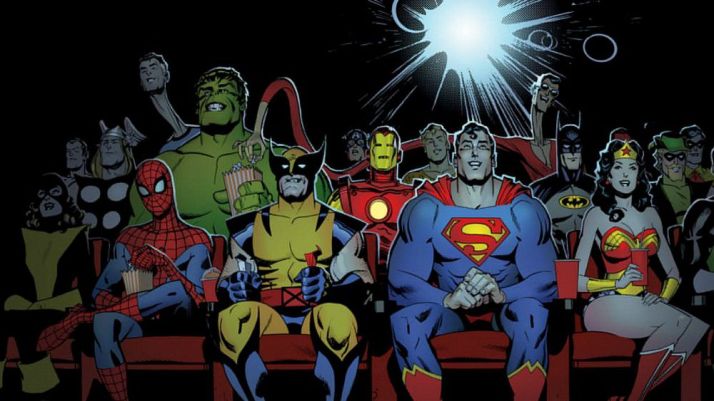
In an interview with the Radio Times, British actor Simon Pegg bemused on what he considered the infantilism of western culture. “Before Star Wars, the films that were box office hits were the Godfather, Taxi Driver, Bonnie and Clyde and the French Connection – gritty, amoral art movies”, Pegg commented, “then suddenly the onus switched over to spectacle and everything changed.”
Pegg continued, “now, I don’t know if that is a good thing. Obviously, I’m very much a self-confessed fan of science fiction and genre cinema. But part of me looks at society as it is now and just thinks we’ve been infantilised by our own taste. Now we’re essentially all consuming childish things – comic books, superheroes… Adults are watching this stuff, and taking it seriously!”
Perhaps this cultural shift is a sign of a greater decline into mass infantilism. The idea isn’t as ridiculous as one may think. The philosopher and cultural theorist, Jean Baudrillard, noted that the dominant forces in society often infantilize people to keep them pliable. And there is certainly a part of our personalities that longs for the innocence of childhood. As Stephen Fry commented in an interview with Dave Rubin:
“Nobody wants to believe that life is complicated, this is the problem. I suppose you might call it ‘the infantilism’ of our culture. There is deep infantilism in the culture and that extends in terms of the way they (people) think. They can’t bear complexity. The idea that things aren’t easy to understand, that there’s an um but there’s an ah, you have to think, there are gradations. No one wants that. They want to be told or they want to be able to decide and say ‘this is good, this is bad, I’m saying so. Anything that in any way conflicts with that is not to be born’.”
Today, the highest plateau of popular culture is ‘teen culture’. Hence our culture has become infused with completely vacuous entities: the Kardashians, Ariana Grande, Justin Bieber. Many adults are fans of child and adolescent fiction writers: J.K Rowling, Stephanie Meyer, and the like. In her book, the Death of the Grown-Up: How America’s Arrested Development is Bringing Down Western Civilization, author Diana West commented: “these days, of course, father and son dress more or less alike, from message-emblazoned T-shirts to chunky athletic shoes, both equally at ease in the baggy rumple of eternal summer camp. In the mature male, these trappings of adolescence have become more than a matter of comfort or style; they reveal a state of mind a reflection of a personality that hasn’t fully developed, and does want to – or worse, doesn’t know how.”
More alarming, however, is the inherent infantilism evident in youth politics. Like insolent children, these youths throw temper tantrums anytime anyone dares to question their precious, and false, worldview. Ultimately, when these progressive young people back a cause it is to attain ‘street cred.’ They become social media crusaders. But those among their ranks willing to take up arms and lay down their lives for their cause is vanishingly small. These pathetic little snowflakes feel traumatised whenever someone has the tenacity to disagree with them (of course, they have no problem with intimidating those who disagree with them).
And colleges and universities encourage this kind of behaviour! The official guidelines at Oberlin College in Ohio suggest that lectures avoid using ‘triggering’ materials. University safe spaces give special, snowflake students the option of hiding from dissent. Similarly, many young people complain of ‘microaggressions’: small words and actions that are considered harmful despite their lack of malicious content. But in most cases, these measures are forms of oppression disguised as benevolence. They are a means of silencing voices of dissent.
Don’t allow yourself to be seduced by this cult of infantilising escapism. Instead of watching Transformers try watching Schindler’s List, instead of reading Twilight try reading Macbeth or Hamlet, and rather than hiding behind your safe-spaces, trigger warnings, and micro-aggressions try listening to what the other person has to say. Who knows? Maybe you might learn something.
THE PROBLEM WITH MULTICULTURALISM

At a security conference in Germany, the former British Prime Minister, David Cameron, condemned multiculturalism as a failure. He stated: “we need less of the passive tolerance of recent years and much more active, muscular liberalism.” In a similar statement, the French president, Nicolas Sarkozy, also condemned the doctrine of multiculturalism. Sarkozy told the French people: “we have been too concerned about the identity of the person who was arriving and not enough about the identity of the country that was receiving him.” In recent years, the Western nations that have preached multiculturalism and diversity as bastions of peace, tolerance, and diversity – Great Britain, France, Germany, the United States – have been the primary targets of radical Islamic terrorism.
Progressives like to believe multiculturalism and diversity create harmonious and peaceful societies. When, in reality, it creates division. Telling newcomers that they do not have to assimilate into their adopted culture fosters tribalism: Irish form communities with fellow Irish, Muslims form communities with fellow Muslims, Japanese form communities with fellow Japanese, and so forth. As these cultures, especially those lacking the fundamental roots and beliefs of their adopted countries, compete for supremacy, they inevitably conflict with one another. So, whilst Germanic and French cultures may be able to live harmoniously thanks to their shared Christian heritage, the same cultures would not fare as well if they were expected to co-exist with a culture whose central tenants are profoundly different.
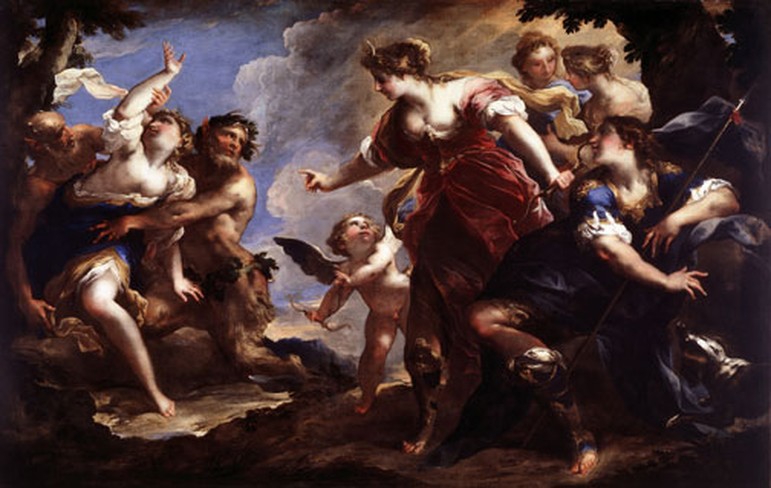
Why am I harping on about the inherent faults in multiculturalism and diversity? It is because I believe we have created the greatest culture mankind has ever seen: a culture that has produced Shakespeare, Mozart, Voltaire, Plato, Aristotle, John Locke, freedom and democracy, the television, the I-Phone, the movies, free market capitalism, Van Gogh, Da Vinci, Einstein, Newton, Mary Shelley, the Bronte sisters, and more. And I believe it is a culture worth protecting. And how do we protect it? We start by protecting the very things that have made the West so great in the first place: Christianity, an adherence to truth and a deep esteem towards the logos, the supremacy placed on individual rights and liberties, the free-market place of ideas and commerce, Small Governments, and political freedom.
Moral and cultural relativism is being used to tear down and replace the existing social order. When the Mayor of London, Shadiq Khan, is able to state “terror attacks are part and parcel of living in a big city” and young German women are able to hold signs proudly proclaiming “will trade racists for rapists” unopposed, it is clearly time for certain ideas to go away.
CASABLANCA
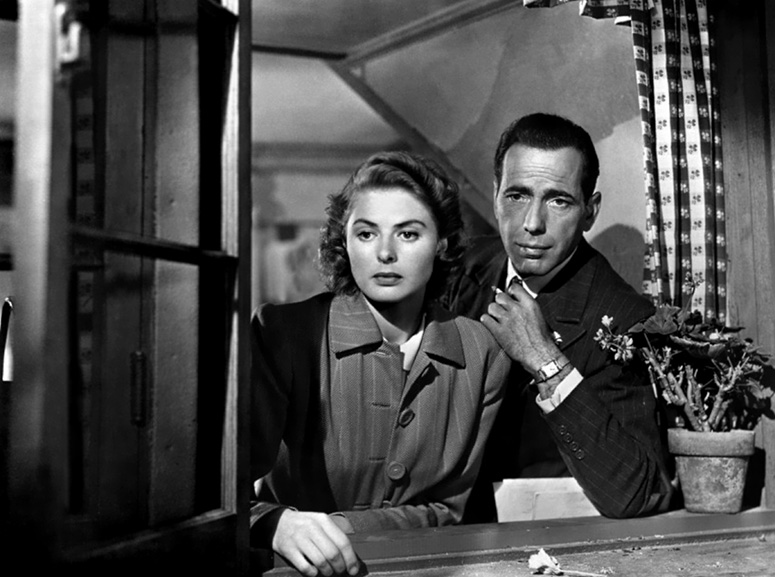
For our weekly cultural article, we will be looking at the film Casablanca. Released in 1942, Casablanca delves deeply into themes of morality and human sacrifice, tentatively exploring both the good and bad aspects of humanity.
BACKGROUND
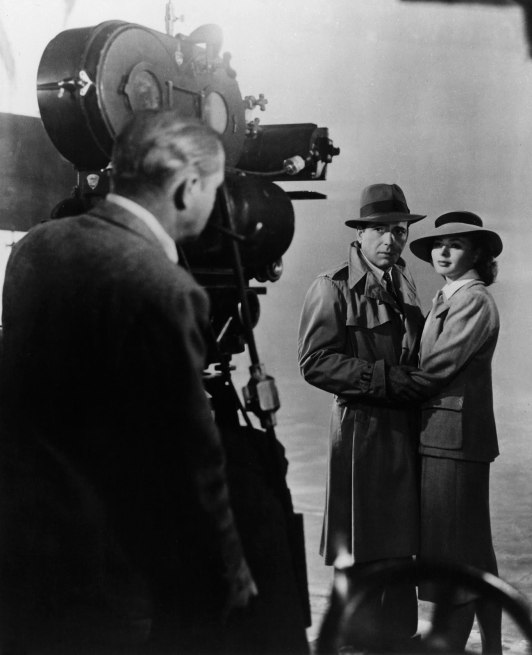
The American Film Institute ranks Casablanca as the second greatest film of all time (ranked behind Citizen Kane).
The fact that Casablanca is still so revered, even after seventy-five years, is nothing short of a miracle. The film was made on a tight budget in the style common to the studio system of the time, having been made on set with a studio director, studio writers, and studio actors.
Its script has been voted by the Writers Guild of America as the greatest ever written. That, too, is a miracle. The script was based on a play that was never performed: “Everybody Comes to Rick’s”, by Murray Burnett (1910 – 1997) and Joan Alison (1901 – 1992). The task of adapting the play to film was given to three separate screenwriters, who completed their task in three different locations. Julius G. and Philip G. Epstein (1909 – 2000; 1909 – 1952) would finish theirs just a few days before filming began. Howard Koch (1901 – 1995), on the other hand, wouldn’t hand his in until filming was well underway.
And even then, scraps of dialogue and scene rewrites were being rushed to the set, the ink still wet on the page.
THE FILM
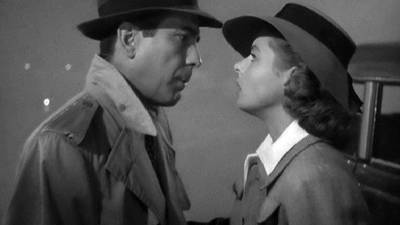
Perhaps one reason for its long lasting success is its refusal to be categorised. Casablanca is one part war film – being presented against the backdrop of the Second World War, one part love story – Rick Blaine (Humphrey Bogart), Ilsa Lund (Ingrid Bergman), and Victor Laszlo (Paul Henreid) are embroiled in a bitter love triangle, one part political thriller, and one part allegory – presenting both the best and worst aspects of human nature.
Another reason is the stellar cast it boasts: Humphrey Bogart (1899 – 1957) – considered the greatest film star of all time by the American Film Institute, Ingrid Bergman (1915 – 1982) – one of film’s most naturally beautiful women, Claude Rains (1889 – 1967), Sydney Greenstreet (1879 – 1954), Paul Henreid (1908 – 1992), and Peter Lorre (1904 – 1964).
SUMMARY
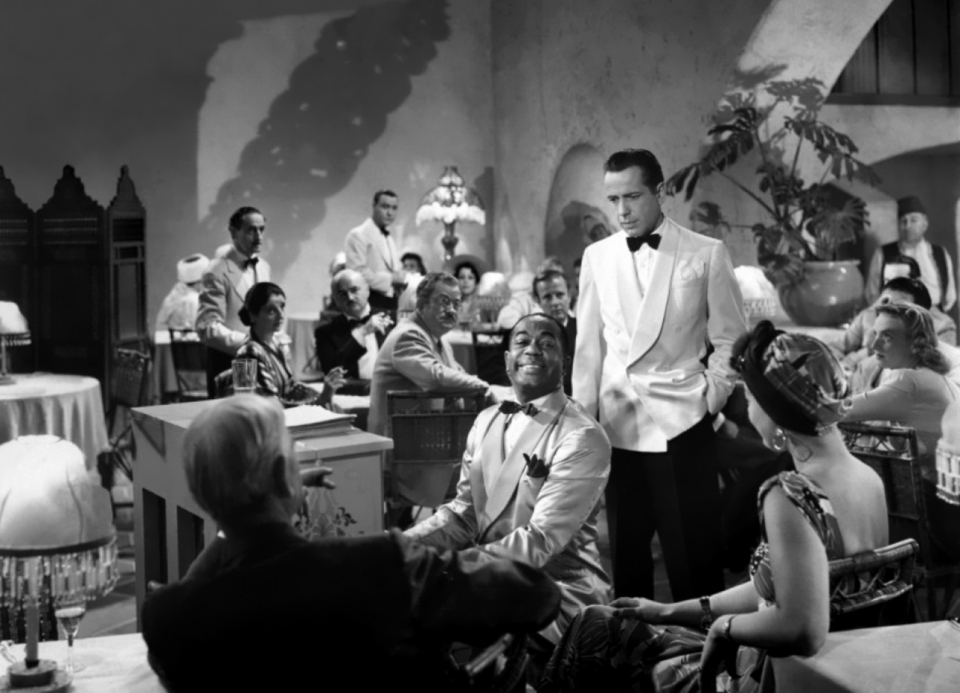
Naturally, no one thought Casablanca would be a hit, people weren’t even sure if the allies would win World War Two. However, as Alrean Harmetz wrote in Round Up the Usual Suspects: the Making of Casablanca, Casablanca seemed almost destined to be a film classic:
“There are better movies than Casablanca, but no other movie better demonstrates America’s mythological vision of itself – tough on the outside and moral within, capable of sacrifice and romance without sacrificing the individualism that conquered a continent, sticking its neck out for everybody when circumstances demand heroism. No other movie has so reflected both the moment when it was made – the early days of World War II – and the psychological needs of audiences decades later.”
I believe Casablanca‘s long lasting success boils down to its depiction of the goodness of human beings in the wake of great evil. Early in World War Two, Casablanca was Vichy France, and therefore Nazi German, territory. In the film, Casablanca is depicted as a world of corruption, a crossroads where Nazis, members of various resistance forces, criminals, spies, and traitors come together. It is a fascist society where the oppressors imprison millions, where human life is a commodity to be traded for benefits. No one cares about anyone, save for themselves.
The imprisoned respond to their imprisonment in different ways: some fight against it, others try to escape it, and others try to profit from it. In one scene, a man is shot dead trying to escape. He falls under a poster of Marshall Philippe Petain (1856 – 1951), the Chief of Vichy France. We learn he was clutching a Free France handbill.
Desperate attempts to escape to freedom are understandable. But the film also presents us with an array of lowlifes and criminals, and, remarkably, even asks us to express pity for them. Signor Ferrari (Sydney Greenstreet) is a shrewd and callous gangster who, it is suggested, profits from the sale of human beings.
The total disregard for human life is depicted in a scene where Ferrari offers to buy Rick’s friend and piano player, Sam, portrayed by Dooley Wilson (1886 – 1953). Rick refuses, saying “I don’t buy or sell human beings.” “Too bad”, Ferrari replies, “that’s Casablanca’s leading commodity.”
Then there’s Signore Ugarte (Peter Lorre), the North African black market dealer who represents disorganised criminal who profits from the misery of others. Rick ignores his pleas for help as he is arrested for murdering two German couriers in order to steal non-rescindable, French General Marshal Weygand signed, letters of transit.
Ultimately, Casablanca is a film of redemption and human sacrifice. It asks its audience to not only imagine winning the loves of their lives but asks them to imagine giving them up for the greater good.
Rick starts out as a cynical and resentful anti-hero. “I stick my neck out for no one”, he tells us at one point. By the end of the film, he has been transformed into a selfless hero. “It doesn’t take much to see that the problems of three little people don’t amount to a hill of beans in this crazy world”, he tells Ilsa.
In the end, Casablanca shows the power of sacrifice and brotherly love over tyranny and evil. Even when everything is lost, hope can be found among those few human beings who are willing to put their personal needs aside and sacrifice themselves for others.
